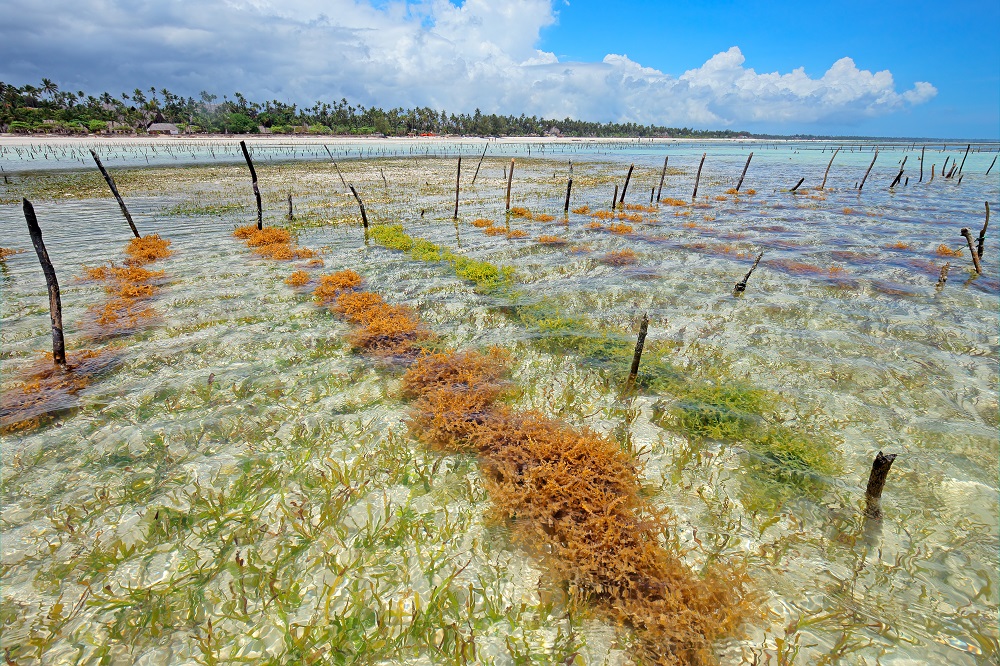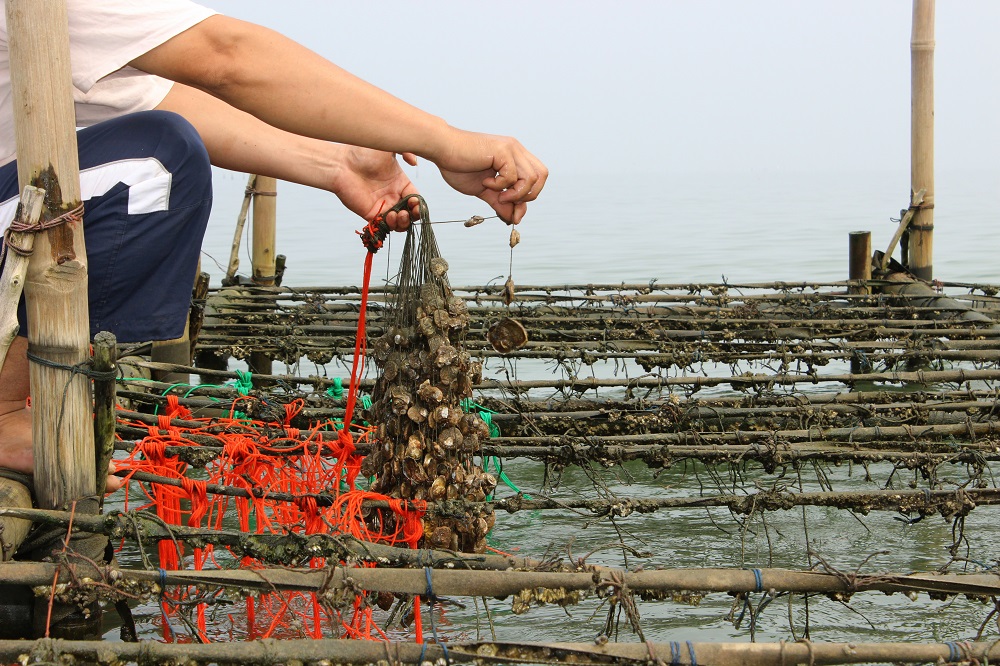
Thesis subject
Food from the sea still needs a lot of work
There are high expectations for the production of food at sea, but the opportunities are limited, argues theoretical biologist Jaap van der Meer, even with the latest technological options such as ecological engineering. “We are already at the limits. There isn’t much scope for expansion.”
UN Water Conference
The UN Water Conference is held from 22 March - 24 March in New York. The Netherlands and Tajikistan are co-organizers of this event. WUR aims to draw attention to the availability of water in the production of food during this conference.
Feeding the growing global population is an ever greater challenge. According to parties such as the FAO, the European Commission and some Wageningen scientists, we should perhaps be focusing less on the land and more on the sea. The oceans account for 70 per cent of the Earth’s surface but only supply one to two per cent of our food. This could be more, according to proponents of the ‘Blue Growth’ concept. For example, we could increase the efficiency of farming food in the sea. “But unfortunately it isn’t that simple,” says Jaap van der Meer of Wageningen Marine Research. He wrote a paper that was published in the journal Nature Food in December 2020 and has attracted considerable attention. “The models that were used previously look at the available surface area for food production, but not the available nutrients or the composition of the marine food pyramid.”
Calculating “Blue Growth”
Van der Meer is a theoretical biologist. He is specialised in calculating energy budgets for organisms and populations. “A lot of stories have been circulating about the potential of Blue Growth in the last ten to fifteen years,” he says. “But I started to wonder if it was really possible. It turned out nobody had done the maths. That is why a great journal like Nature Food was interested.”
In terms of fertility, you can compare most of the ocean with a desert: on average there is a huge scarcity of nutrients. That is the main limitation of marine food production for human consumption. “Another problem,” says Van der Meer, “is that the first two levels of the food pyramid – the plants and herbivores – mainly consist of single-celled algae and plankton less than half a millimetre in size. We can’t harvest them.”
Available nutrients in oceans
Larger algae do exist, so can’t we eat those? “You won’t find the large algae, seaweeds, in the open sea,” Van der Meer replies, “only in a very narrow coastal zone. They have to be able to attach themselves to the sea bed.” You could grow them in the open seas, for example using floating scaffolding. But Van der Meer says that never took off properly.
“It’s expensive and technically difficult. Another downside is that poorer
countries have fewer opportunities in that area. It’s not something you can
apply at a large scale. What is more, large seaweeds are difficult to harvest
and they soon rot if you don’t dry them properly immediately. That makes this
product unsuitable as a staple food.”

According to the biologist, coastal seas such as the North Sea can also only feed a limited number of people. “The amount of nutrients is limited there, too. Even if you could convert all the available nitrogen and phosphorus into seaweed, nothing would remain for other organisms, and you’d still have very low yields per unit of surface area, certainly in comparison with a product such as sugar beet.”
Fertilisation is not an option, in part because that changes the composition of the algae. “Experience shows that this mainly benefits inedible species,” says Van der Meer. “You can see this in coastal water that is contaminated with sewage too.” And secondly because many of the nutrients that could be used to fertilise the coastal area mostly end up in the sea bed.
Food pyramid at sea
That is why, Van der Meer continues, we mainly rely on animals higher up the food pyramid, such as fish, for marine food. But all of them taken together make up a very small proportion of the food production at sea. With each step in that food chain, 94 per cent of the energy is lost; after four or five steps, not much is left. “What is more, many of those fish populations are already overfished,” says Van der Meer.
“Agreements have been made about this in many parts of the world, and we are seeing fish stocks recover. But in other places, such as Asia, the stocks are still declining. And even if we were able to fish sustainably everywhere, the World Bank has calculated that the world’s oceans would produce at most 13 per cent more fish than now. That’s not substantial either.”
- Unfortunately, your cookie settings do not allow videos to be displayed. - check your settings
Cultivation of fish
But what about the cultivation of fish such as salmon in enclosed pools in the sea? “Those salmon eat pellets that contain fish meal and fish oil – which also come from the sea,” Van der Meer answers. “And if you feed them soy, which is already happening, I wouldn’t call it marine production. You would be back to a land-based system. So you are using resources that are already in short supply on land and which have their own associated problems.”
Can’t salmon eat algae? “They don’t like it,” Van der Meer laughs. “At most, you could design processes to extract proteins from seaweed and process them into pellets that salmon do like. But that also comes with limitations – and the whole concept is still in its infancy. A lot of research still needs to be done on it.
Best chance for shellfish farm
In terms of mariculture, Van der Meer sees shellfish cultivation as the most promising option. Shellfish are low down the food chain and they are high-grade food. But there is limited space in coastal zones. And the costs and technology become a limiting factor further from the shore. “There are some pilot projects here and there driven by grants, for
example with floating constructions in the shallow strip of the North Sea adjoining the Zeeland-Holland Delta. But these projects won’t be able to feed the world.”
Think tank EFARO
Since Van der Meer’s article was published in Nature Food journal at the end of 2020, developments have continued. “My colleagues and I are involved in a European think tank, EFARO,” says Van der Meer. EFARO stands for European Fisheries and Aquaculture Research Organisations. “We are now investigating other options to get more food from the sea, at the request of the European Commission, for example by actively restoring depleted ecosystems such as oyster beds or fields of seagrass.”
But colleagues are already warning not to expect too much from this, Van der Meer notes. “We actually know very little about marine ecosystems, especially those in the deeper waters. We barely know what important functions they have and how resilient they are. And the estimates regarding the production of those systems vary widely. It would be dangerous to count on them for our food supply.
Ecological engineering
Then there are the ideas about ‘ecological engineering’: interventions to give biodiversity a helping hand in certain places. “For example by building scaffolding to get a coral reef going, after which the reef will start expanding by itself,” Van der Meer says. “Or by
placing structures on the sea bed that encourage upwelling, the upwards flow of nutrients. This would lead to more algae growth in the upper regions of the sea, as a basis for more production in the rest of the food pyramid.”

It would be a nice solution, according to Van der Meer, because those nutrients in the deeper layers of the ocean do not have an ecological function: there are no algae to convert them into biomass, because algae need light. “That’s why some colleagues are relatively optimistic about this option,” says Van der Meer. “But here too you should first investigate how you can best do this, for example where and to what extent. And whether there are any downsides. And what the costs are in relation to the yields.”
In general, EFARO has doubts about the potential of ecological engineering. “It remains to be seen whether it’s going to produce any significant results,” says Van der Meer. “Perhaps in some coastal areas, yes. But as a solution for the global food problem – no, probably not.”
Should the Blue Growth idea just be ditched completely? That would be going too far, says Van der Meer. Coastal seas that have room for additional farming of seaweeds or shellfish do exist, for example the China Sea, where many places have a nutrient surplus. And there are also opportunities for small-scale farming in the North Sea.
Van der Meer: “I’m not saying nothing can be done, but we do need to assess the possibilities critically and do a lot more research. Blue Growth has been hyped in recent years and I’m trying to put it into perspective.”
This longread is an edited version of a previously published article in Wageningen World, WUR's relations magazine.